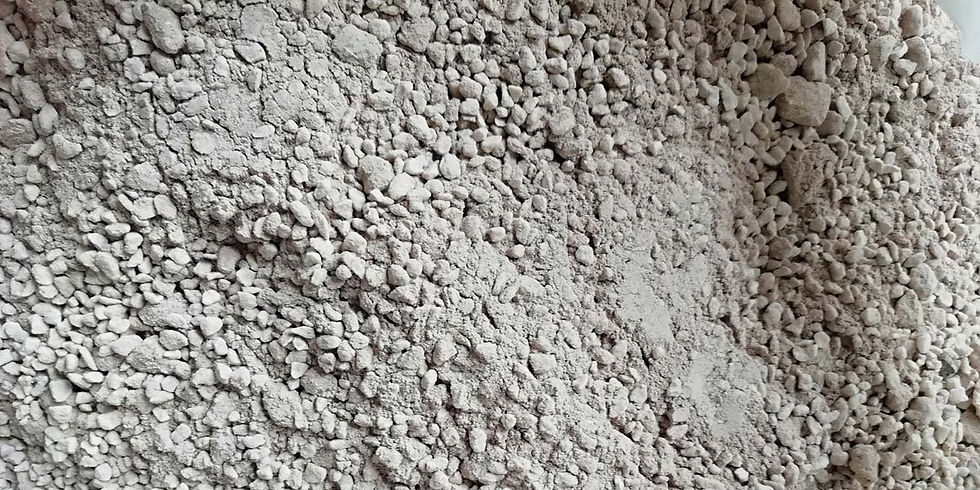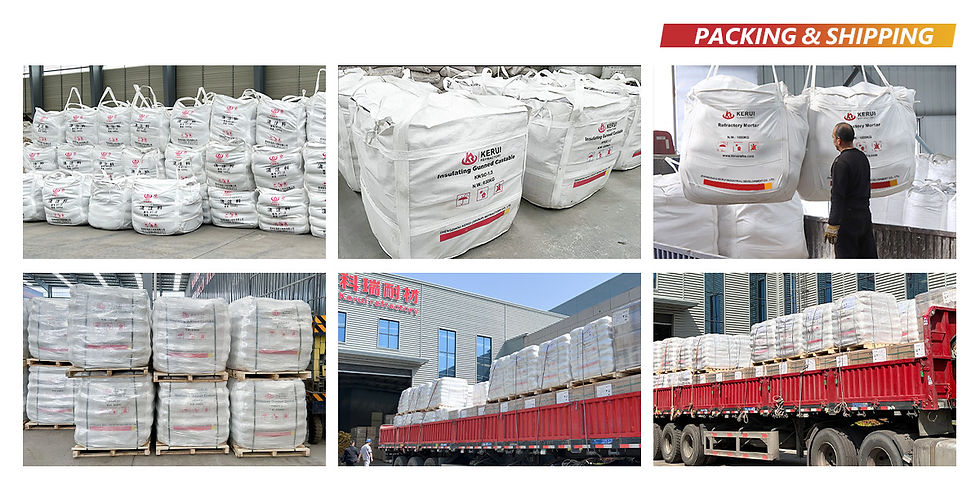Exploring the Wide Applications of Lightweight Castable Refractory
- keruirefra
- 2024年9月10日
- 讀畢需時 5 分鐘
Refractory materials are essential in various high-temperature industrial processes, serving to protect equipment and structures from the extreme conditions encountered. Among the diverse range of refractory products, lightweight castable refractory materials have gained prominence due to their unique combination of properties that offer both thermal insulation and structural integrity. This article delves into the wide applications of lightweight castable refractory, exploring its characteristics, advantages, manufacturing processes, and the various industries where it plays a crucial role.

1. Characteristics and Advantages of Lightweight Castable Refractory
Lightweight castable refractories are designed to be less dense than traditional refractories, which imparts several key characteristics and benefits.
1.1 Composition and Properties
Raw Materials: Lightweight insulating castable refractory typically incorporate lightweight aggregates such as expanded perlite, vermiculite, or alumina-silica microspheres. These materials reduce the overall density while maintaining adequate refractory properties.
Thermal Insulation: The low thermal conductivity of lightweight castable refractories makes them excellent thermal insulators, helping to minimize heat loss and improve energy efficiency.
High Temperature Resistance: Despite their reduced density, these refractories can withstand high temperatures, making them suitable for applications in extreme heat environments.
Low Thermal Shock Sensitivity: Lightweight refractories are often less prone to thermal shock compared to heavier alternatives, thanks to their insulating properties and ability to expand and contract without cracking.
1.2 Advantages
Reduced Weight: The primary advantage of lightweight castable refractories is their reduced weight, which facilitates easier handling and installation. This characteristic can lead to lower transportation and labor costs.
Energy Efficiency: By providing superior thermal insulation, lightweight refractories help to enhance the energy efficiency of industrial processes, reducing fuel consumption and operational costs.
Extended Service Life: Their resistance to thermal shock and chemical attack contributes to a longer service life compared to some traditional refractories.
Versatility: Lightweight castable refractories can be tailored to meet specific performance requirements, making them suitable for a wide range of applications.
2. Manufacturing Process
The production of lightweight castable refractories involves several stages, each critical to ensuring the quality and performance of the final product.
2.1 Raw Material Selection and Preparation
Aggregate Selection: Lightweight aggregates are chosen based on their thermal properties, density, and chemical stability. These materials are processed to achieve the desired granulation and purity.
Binder Preparation: Binders, often composed of calcium aluminate cement or other high-temperature resistant materials, are mixed with the aggregates to form a cohesive castable mixture.
2.2 Mixing and Formulation
Blending: The aggregates and binders are thoroughly mixed to achieve a homogeneous blend. The addition of specific additives may be required to enhance the performance characteristics of the castable refractory.
Water Addition: Water is added to the mix to achieve the desired consistency and workability. The amount of water is carefully controlled to ensure optimal setting and curing properties.
2.3 Casting and Curing
Casting: The prepared castable mixture is poured into molds or forms to shape the refractory material. This process must be performed carefully to avoid air pockets or inconsistencies.
Curing: After casting, the refractory material undergoes a curing process to achieve the desired strength and stability. Curing conditions, such as temperature and humidity, are controlled to ensure proper development of the refractory properties.
2.4 Quality Control
Testing: Rigorous testing is conducted to ensure that the lightweight castable refractories meet the required specifications. Tests may include evaluations of thermal conductivity, density, compressive strength, and resistance to thermal shock.

3. Applications in Various Industries
Lightweight castable refractories are used across a broad spectrum of industries due to their versatile properties. Here, we explore some of the key applications.
3.1 Metallurgical Industry
Furnace Linings: In the metallurgical industry, lightweight castable refractories are used to line furnaces, converters, and ladles. Their thermal insulation properties help to maintain high temperatures efficiently while protecting the furnace structure from molten metal and slag.
Iron and Steel Production: These refractories are employed in blast furnaces and steelmaking converters to enhance thermal efficiency and reduce heat loss, contributing to improved overall productivity.
3.2 Cement Industry
Kiln Linings: Lightweight castable refractories are used to line cement kilns, where they provide excellent thermal insulation and protect against high-temperature conditions. Their reduced weight simplifies installation and maintenance.
Preheaters and Coolers: In preheater towers and clinker coolers, lightweight refractories help manage temperature fluctuations and resist chemical wear, contributing to efficient kiln operation.
3.3 Petrochemical Industry
Reactor Linings: The petrochemical industry utilizes lightweight castable refractories in reactors and other high-temperature equipment. These materials offer thermal insulation and protection against corrosive chemicals.
Gasifiers and Reformers: Lightweight refractories are used in gasifiers and reformers to enhance thermal efficiency and resist the effects of high-temperature gases and vapors.
3.4 Glass Industry
Melting Furnaces: In glass manufacturing, lightweight castable refractories are employed in melting furnaces to provide thermal insulation and withstand the extreme temperatures involved in glass production.
Batch Chambers: These refractories are also used in batch chambers, where they help to maintain consistent temperatures and improve energy efficiency.
3.5 Industrial Boilers
Insulation: Lightweight castable refractories are used as insulation in industrial boilers, helping to reduce heat loss and improve the efficiency of the boiler system.
Furnace Linings: They are also applied to line combustion chambers, where their insulating properties help to manage temperature and protect the structural components of the boiler.
4. Emerging Trends and Innovations
The field of lightweight castable refractories is continually evolving, with ongoing research and technological advancements driving improvements in performance and application versatility.
4.1 Advanced Materials
Nanotechnology: Research into nanomaterials is exploring ways to enhance the properties of lightweight castable refractories, such as improving thermal conductivity and increasing resistance to chemical attack.
Hybrid Refractories: The development of hybrid refractories, combining lightweight aggregates with advanced binders, aims to offer improved performance characteristics and greater application flexibility.
4.2 Sustainability Initiatives
Recycled Materials: Efforts are being made to incorporate recycled materials into the production of lightweight castable refractories, reducing environmental impact and promoting sustainability.
Energy Efficiency: Innovations focused on enhancing the energy efficiency of manufacturing processes and improving the thermal performance of refractories are contributing to more sustainable industrial practices.
4.3 Digital Technologies
Smart Manufacturing: The integration of digital technologies, such as advanced sensors and data analytics, is enabling more precise control of the manufacturing process and improving the quality and consistency of lightweight castable refractories.
Simulation and Modeling: Computer modeling and simulation techniques are being used to optimize the performance of refractories in various applications, allowing for more efficient and effective designs.
Conclusion
Lightweight castable refractories represent a significant advancement in refractory technology, offering a unique combination of thermal insulation, reduced weight, and high-temperature resistance. Their wide range of applications across industries such as metallurgy, cement, petrochemicals, glass, and industrial boilers underscores their versatility and importance in modern industrial processes. As research and technological innovations continue to drive improvements in this field, lightweight castable refractories are poised to play an increasingly vital role in enhancing energy efficiency, reducing operational costs, and supporting sustainable industrial practices.




留言